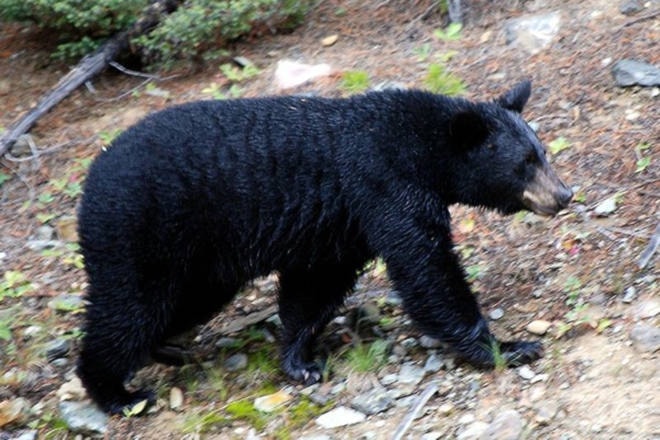Spring means more than just the start of tourists returning to Okanagan Valley communities.
It also means bears awaken from their winter hibernation to begin a six to seven month cohabitation arrangement with residents in the region that doesn’t always go well.
Frank Ritcey, provincial coordinator with WildSafe BC in Kamloops, said funding has been provided for a part-time WildSafe wildlife awareness coordinator to work out of West �������� this year.
Ritcey said Andrea Pait, who worked in the new position created last year, will return to carry on public awareness initiatives started last summer.
“It’s a tough go when you first start out with this because you are talking about changing how people do things they have done for a very long time,” Ritcey said.
“One of the big issues in West �������� is about people putting out their garbage the day of pickup rather than the day before, and understanding how that is one measure that will attract bears to wander down into your neighbourhoods.”
Similar to last year, the program in West �������� is funded by the provincial government in partnership with Westbank First Nation, communities of West �������� and Peachland, and the Regional District of Central Okanagan.
WildSafe BC is a program designed and delivered through the B.C. Conservation Foundation. It receives core funding from the province and seeks partnerships with B.C. communities to protect the interests of residents and wildlife.
The bearsmart program coordinated by WildSafe also exists in Vernon area, Naramata and the Regional District of Okanagan-Similkameen.
Naramata achieved its bearsmart status by fulfilling a number of required criteria—creating a bear-resistant waste management plan, establish bylaws that address reduction of bear attractants and writing those principles into the Official Community Plan; and undergoing a bear management hazard assessment and responding bear management plan.
“It basically sets out a direction a community wants to go in terms of how it will interact with wildlife. We see a real difference in wildlife public awareness for communities that do obtain a bear awareness status,” Ritcey said.
He said the frequency of bears interacting with area residents continues as communities build interface neighbourhoods to the wilderness.
“That’s a part of it, there just wasn’t the human-wildlife conflict 30 years ago that you see now,” he explained. “One of the big things I also attribute to it is the establishment of leash laws.
“You don’t see dogs running up and down the street anymore and I think that used to do a lot to keep wildlife away. Now today you see deer feeling safe moving into urban centres feeling they are in a safe place.”
Ritcey said their wildlife management advice is intended to avoid Conservation Officers from being forced to shoot an animal in an urban setting.
“That is a really tough decision they have to make in that situation, so we need to reduce the attractants that entice animals—like bears routing through a garbage can which is usually the cause behind 50 per cent of bear nuisance calls—that requires those kinds of actions to be taken.”
Bruce Smith, spokesperson for the Regional District of Central Okanagan, said bear sightings are common in the Mission Creek and Hardy Falls regional parks because of access to food supply.
Mission Creek park in particular offers a veritable smorgasbord for bears meandering down from the South Slopes wilderness area, drawn to the kokanee salmon in the creek and fruit orchards on the bench above the Okanagan Lake tributary.
“In the past we have had to close sections of a given park because of bears. Hardy Creek is a unique situation because it is a canyon, so there is one way in and one way out and it also is a kokanee spawning stream.”
Bear sightings can be reported to the Conservation BC toll-free number 1-877-952-7277.



